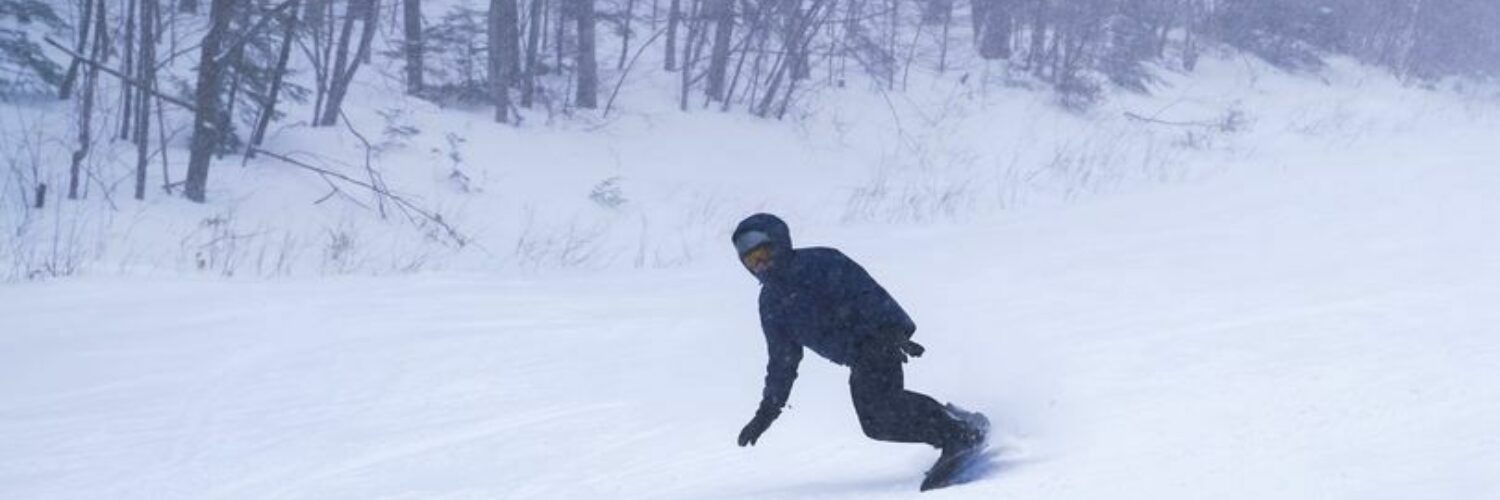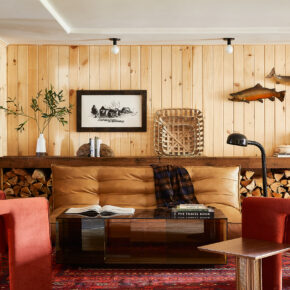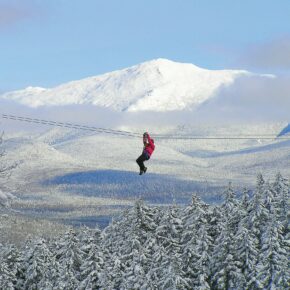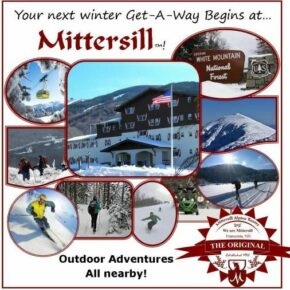What to Wear

Dressing appropriately for a day on the slopes is one of the most important things you can do to ensure a pleasant – and safe – experience. Since you’re going to spend time outdoors in an alpine and/or wooded environment, conditions can vary greatly from day to day, and even hour to hour. Knowing the weather in advance is important, and then you should plan you clothing and outerwear accordingly.
Here are some tips for making the most of a chilly day on the snow, and staying safe, including best practices for clothing, and more. We also suggest checking out the Appalachian Mountain Club’s “How to Layer for Winter” for another take on dressing to enjoy outdoor winter recreation activities.
Base layer clothing
Base layers (a.k.a. long or thermal underwear) are your number one line of defense against the cold. You want them to be made of a synthetic material (not cotton!), and you want them to fit snuggly. They sit next to skin and form the "base" of your apparel for the day. Their mission? To pull moisture off your skin, and turn it into water vapor by speeding the evaporation process. Water that sits on your skin is just asking for you to be cold and clammy. By taking the moisture off your skin and getting it out of a liquid state as quickly as possible, you can stay focused on skiing and not be shivering on the lift between runs.
Base layers come in different weights based on the intended activity and to cater to customers who run either hot or cold. Heavier weights work well for low levels of activity (ice fishing, winter camping) while lighter weights are designed for more active pursuits (cross-country skiing, winter running). Middle of the road weights tend to be best for downhill skiing and snowboarding, as riders tend to exert energy on the downhills, but have a lift ride back up the hill to contend with.
Insulation
The point of insulation is to trap air in the space between a warm body and the cold outside. By creating a space with "dead air," the goal of insulation is to create a comfortable microclimate next to the skin that is isolated from the colder air outside. There are three main types of traditional insulation within the category.
- Fleece – A synthetic knit fabric. Comes in varying weights. Maintains warmth when wet and dries quickly, but has a relatively low warmth to weight ratio.
- Down – Natural fiber which comes from the undercoat of either geese or ducks. Has the best warmth to weight when dry, but clumps and performs terribly when wet.
- Synthetic Insulation – Similar to the batting that would be found in a quilt. Typically made of polyester. It is better than fleece, worse than down but maintains 70% of its warmth when wet.
Shell
The goal of the shell layer is to shield the wearer from the wind and/or rain. For a shell to work the best it can, it needs to be made of a waterproof/breathable material.
The wearer needs to decide whether they want a simple hard shell or an insulated shell. An insulated shell is able to beef up the performance of the insulation layer, but cannot be shed if the wearer is too warm. Conversely, if an uninsulated shell is chosen, the wearer needs to carry an extra layer if the weather changes.
Insulation for your lower body is as important as it is for your upper body. We recommend thermal underwear and insulated snowpants for your lower body. Beyond your outfit, we recommend the following for staying toasty on your day of skiing.
Pay Attention to Your Hands, Feet, Head, Neck and Face
Heat will escape first through your extremities so it’s very important to protect them. Never wear cotton on your hands or feet in the cold! Wool or synthetic is the material you want and it will keep you much warmer and help protect you from hypothermia. Synthetic face/neck warmers and masks that cover every inch of your face and goggles to protect your eyes are also important in exceptionally cold weather as is a hat and helmet for your head. Insulated mittens are best for your hands. Using hand and feet warmers can also bump up your comfort level on colder than average days.
Frequent Breaks
The snow will still be there when you're done! By popping into a lodge to get your body back up to a comfortable temperature, you'll actually extend the amount of skiing you can do.
Indulge a Little
If you're a brown bagger on your ski days, you might scoff at this suggestion. Splurging on a hot soup or a warm cup of cocoa will not only help to thaw your chilly fingers, but it will fill your stomach and warm you up more quickly than the soggy sandwich shoved into your boot bag. Whether you have the soup or the sandwich, make sure that you are hydrating! Hydration will help you stay warm and can help delay hypothermia.
Bring Spare Apparel
It's amazing what swapping out your socks for a dry, toasty pair, or changing your neck warmer will do. Sure, it might not be tempting to take your boots off when your toes feel like popsicles, but you'll thank us later when your feet can last for a few more hours on the trails.
Please Note – On Extreme Cold Days!
Know the Signs of Frostbite & Hypothermia!
When temperatures dip to the single digits or below, or there are extreme cold weather advisories, it is very important to be prepared when heading to the slopes. It is never fun, nor safe, to feel cold for too long, to end up with hypothermia, frost bite or worse.
Frostbite and hypothermia can come on quickly on a cold day and can be dangerous to your health. Get inside immediately if you feel a prickly sensation on your fingers or toes. Whiteness and discoloration of the skin is also a sign of frostbite. Uncontrollable shivering, slurring of speech or drowsiness can mean you are becoming hypothermic. Serious hypothermia is a life-threatening condition. Skiing or riding in pairs or a group is advisable as you can keep an eye on each other to spot when someone in the group is becoming too cold and needs to go inside. Be proactive, stay safe and you’ll enjoy lots of skiing and riding in the days ahead.

Your Sunapee Basecamp
Discover Bluebird Sunapee, New Hampshire's year-round mountain and lake getaway
LEARN MORE
Winter trains on Mount Washington!
Climb the highest peak in the Northeast by rail, with daily departures to The Cog’s newly expanded Waumbek Station!
LEARN MORE
Bretton Woods Canopy Tour - High-flying Winter Fun!
Reach new heights on the Bretton Woods Canopy Tour, featuring 9 ziplines 3 rappels and 2 sky bridges. A unique winter adventure not to be missed!
LEARN MORE
Come Discover Mittersill™!
Whatever your favorite winter adventure… Mittersill™ is right around the corner! A great get-a-way for the week or mid-week skier.
LEARN MORE